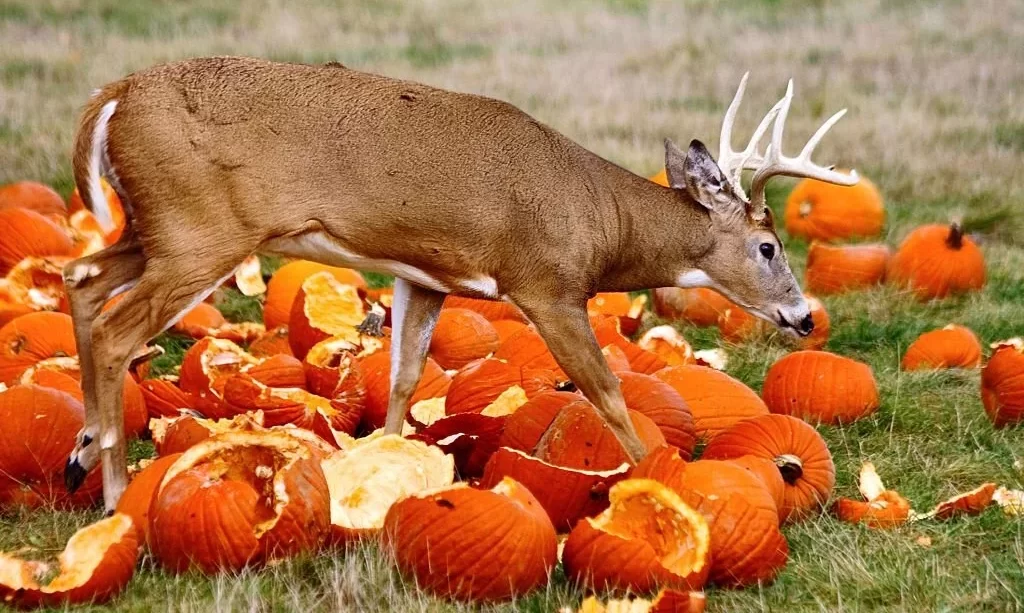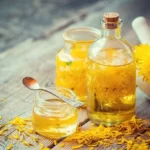Pumpkins, with their vibrant orange hue and diverse culinary uses, are a beloved staple in gardens and kitchens worldwide. From jack-o’-lanterns to pies, these versatile fruits bring warmth and charm to both autumnal decorations and hearty meals. However, as gardeners nurture their pumpkin plants, a common concern often looms: do deer have a penchant for pumpkin foliage and fruits? In this article, we embark on a journey to explore the feeding habits of deer and their potential attraction to pumpkin plants. Understanding this dynamic can be crucial for gardeners seeking to protect their pumpkin crops while coexisting with these graceful creatures in shared outdoor spaces.
- Name: Big Max Pumpkin | Type: Heirloom
- Size at Maturity: 100+ Pounds | Days to Maturity: 110 Days
- Light Requirement: Full Sun | Planting Time: Warm Season
- Sowing Method: Direct Sow
- Planting Depth: 1-1 1/2″ | Plant Spacing: 48″
Deer Feeding Behavior
Deer, renowned for their elegance and graceful movements, are herbivorous creatures with a diverse appetite for plant matter. Their feeding behavior is both fascinating and influential in the context of gardening and agriculture. Here’s a glimpse into the feeding habits of deer:
- Opportunistic Grazers: Deer are opportunistic grazers, which means they feed on a wide range of plant species. Their diet may encompass leaves, stems, buds, flowers, fruits, and even woody vegetation, depending on the season and local food availability.
- Seasonal Preferences: Deer’s dietary preferences can change dramatically throughout the year. During the spring and summer months, they tend to favor fresh, green vegetation. In contrast, during the fall and winter, they often turn to woody plants, acorns, and other high-energy foods to sustain themselves.
- Local Variation: The feeding habits of deer can vary based on their specific location and the types of plants available in their environment. In regions with abundant natural vegetation, they may have less interest in cultivated garden plants.
Understanding deer’s natural inclinations and how they interact with the plant world is a crucial first step in determining whether pumpkin plants are on their menu and if gardeners need to take measures to protect their cherished pumpkin crops.
Pumpkins: Overview and Growth
Before delving into the question of whether deer consume pumpkin plants, it’s essential to understand the nature of these beloved garden denizens. Pumpkins, scientifically known as Cucurbita pepo, are iconic members of the gourd family. Here’s an overview of pumpkins and their growth characteristics:
- Botanical Bounty: Pumpkins are part of the larger Cucurbitaceae family, which includes various squash and gourd species. They are renowned for their large, round fruits with a bright orange or sometimes yellowish hue.
- Vine-Loving Plants: Pumpkin plants are typically characterized by sprawling vines that creep along the ground or climb support structures. These vines produce large, lobed leaves and vibrant, trumpet-shaped flowers.
- Seasonal Stars: Pumpkins are famously associated with the autumn season, as they reach their peak maturity in the fall. Their fruits are harvested for a multitude of purposes, including carving for Halloween, cooking into pies, and using as decorative elements in seasonal displays.
Do Deer Eat Pumpkin Plants?
Now, let’s address the central question: do deer have an appetite for pumpkin plants, including both their foliage and fruits?
- Foliage Consumption: Deer are known to occasionally browse on pumpkin plant foliage. The leaves and stems of pumpkin plants are not their top choice, but when other food sources become scarce or during times when deer are particularly hungry, they may nibble on pumpkin leaves.
- Fruit Consumption: Deer are less likely to consume pumpkin fruits. The thick, hard rinds of mature pumpkins make them less appealing to deer. However, young, tender pumpkins are more susceptible to deer feeding, especially if they are the only available food source.
It’s important to note that while deer may graze on pumpkin plants, these garden favorites are not their preferred food. Other garden plants, especially those with softer foliage and more palatable characteristics, are often higher on the menu for deer. Nonetheless, gardeners who wish to protect their pumpkin crops and ensure a successful harvest may consider strategies to deter deer or safeguard their plants during vulnerable stages of growth.
Deer-Resistant Strategies
Gardeners who cherish their pumpkin crops and seek to minimize deer browsing can employ a variety of strategies to protect their plants. Here are some effective deer-resistant tactics:
- Fencing: Installing a sturdy deer-resistant fence around the garden area is one of the most reliable ways to keep deer at bay. Ensure the fence is tall enough (typically at least 7-8 feet) to deter deer from jumping over.
- Repellents: Utilizing deer repellent sprays or deterrents that emit odors or tastes unpleasant to deer can discourage them from approaching your pumpkin plants. These products can be applied to the plants or placed around the garden perimeter.
- Companion Planting: Planting deer-resistant plants alongside your pumpkins can help deter deer from entering your garden. Examples of deer-resistant companion plants include lavender, rosemary, and marigolds.
- Motion-Activated Devices: Motion-activated sprinklers or noise-making devices can startle and deter deer when they approach your garden. These devices are a humane way to discourage deer without causing harm.
- Netting or Covers: Using netting or covers to protect vulnerable pumpkin plants, especially young and tender ones, can prevent deer from reaching them.
- Garden Design: Consider planting pumpkins in raised beds or containers, making it more challenging for deer to access them. Additionally, pruning nearby shrubs and trees can reduce deer hiding spots near your garden.
- Tough durable deer netting; Protects landscape and crops from deer and other animals
- Economical, lightweight deer protection; Black UV-resistant deer netting
- Reusable mesh deer fence; Stops deer and other animals from eating shrubs, berries, and vegetables
- Easy to use roll of deer fence netting; Attaches easily to posts and trees
- Do it yourself deer netting for protecting trees, shrubs, orchards and crops
Conclusion
While deer may occasionally graze on pumpkin plants, these garden favorites are not their top choice. With their tough rinds and less palatable foliage, pumpkins are less attractive to deer compared to other garden plants. Nonetheless, gardeners in areas with a significant deer population may encounter occasional browsing.
To ensure a successful pumpkin harvest and coexist harmoniously with deer, gardeners can implement deer-resistant strategies such as fencing, repellents, companion planting, and more. By taking proactive measures to protect their pumpkin crops, gardeners can enjoy the beauty and bounty of this quintessential autumn fruit without undue concern about deer interference.






